When an integral ecosystem restoration process is contemplated, native species should always be considered as a fundamental part of the project. In the Colorado River Delta, where extreme climates with long periods of drought prevail, it is doubly necessary to use native species such as the Blue Greenwood (Parkinsonia florida) or the Honey Mesquite (Neltuma glandulosa), since they are perfectly adapted to the characteristics of the Sonoran Desert region, which increases the probability of survival. In addition, it is invigorating to contemplate their innate beauty, to appreciate their resilience, and to learn about their cultural connection with the original tribes.
For this reason, in the framework of Tree Day, we share with you a list of native trees of our desert that are currently kept in more than 190 hectares restored in the Colorado River Delta.
Mexican Greenwood (Parkinsonia aculeata)
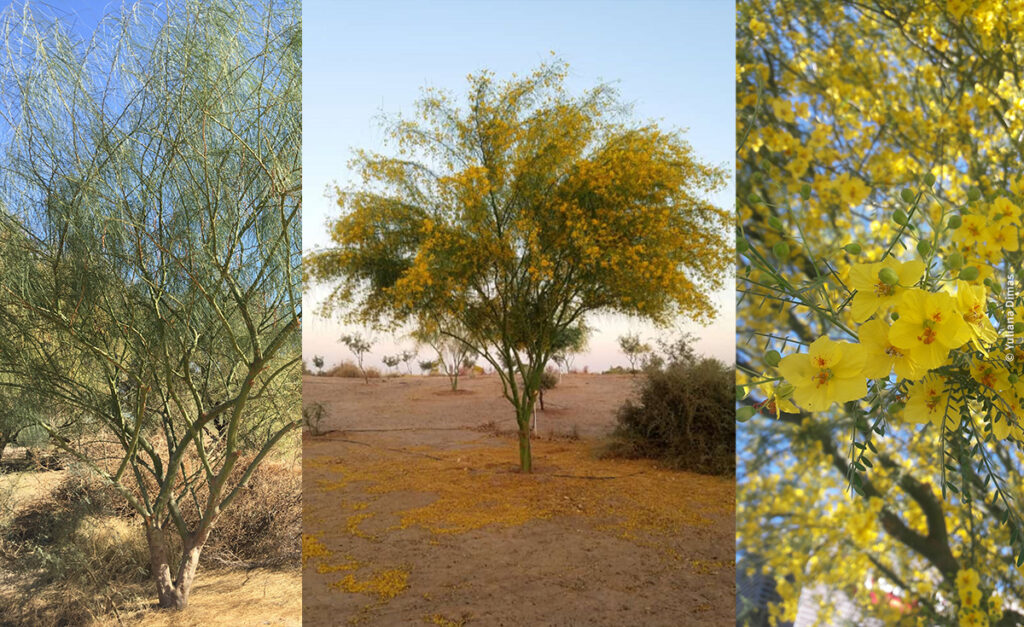
A species adapted to the extreme summers of northwestern Mexico; it is found in Mexicali, Baja California, and San Luis Río Colorado, Sonora. It is distinguished by its greenish trunk, which cracks with age.
Its flowering season goes from March to July, offering a show of intense yellow flowers, distributed in four petals, plus a reddish or brick-red jasper colored one.
Blue Greenwood (Parkinsonia florida)
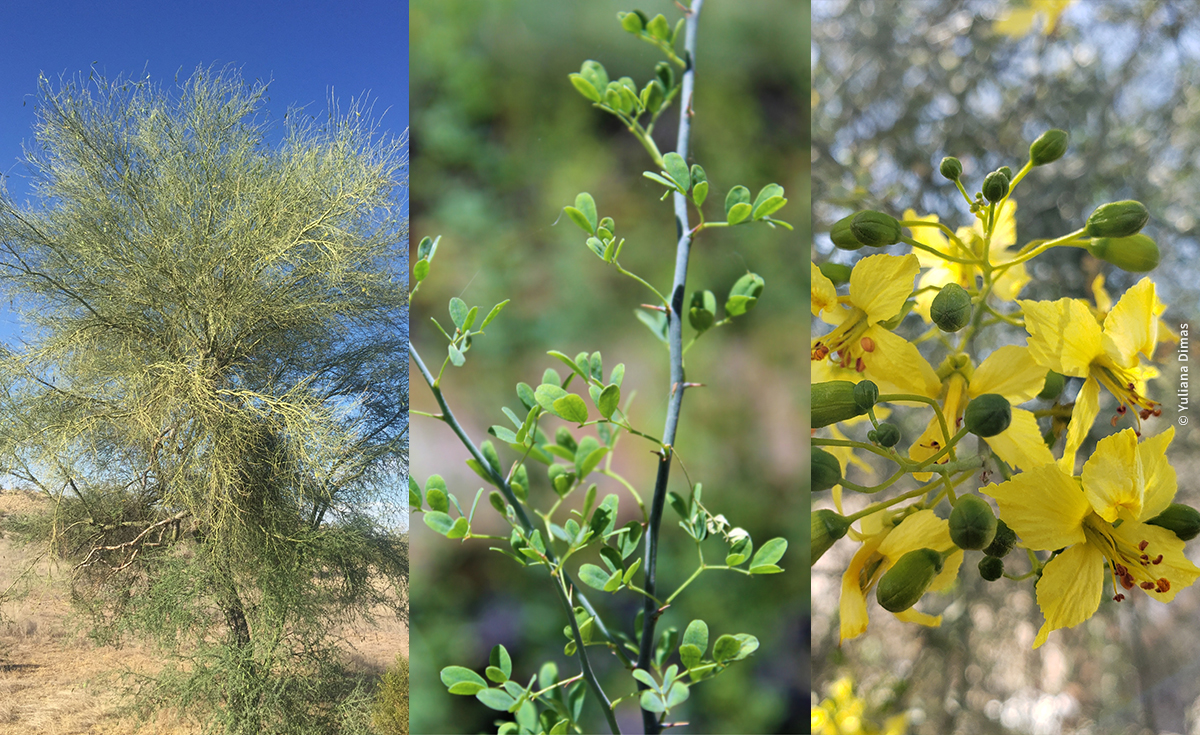
Native to the Sonoran desert, its ability to adapt to the environment rewards it with a prodigious longevity, with records of centennial trees. With an average height of between 10 and 12 meters, it is covered with flowers during the months of March and April.
Its bright yellow flowers are composed of five petals, plus a white one. At the end of the flowering season and after pollination, they transform into pods containing the seeds of the species.
Yellow greenwood (Parkinsonia microphylla)
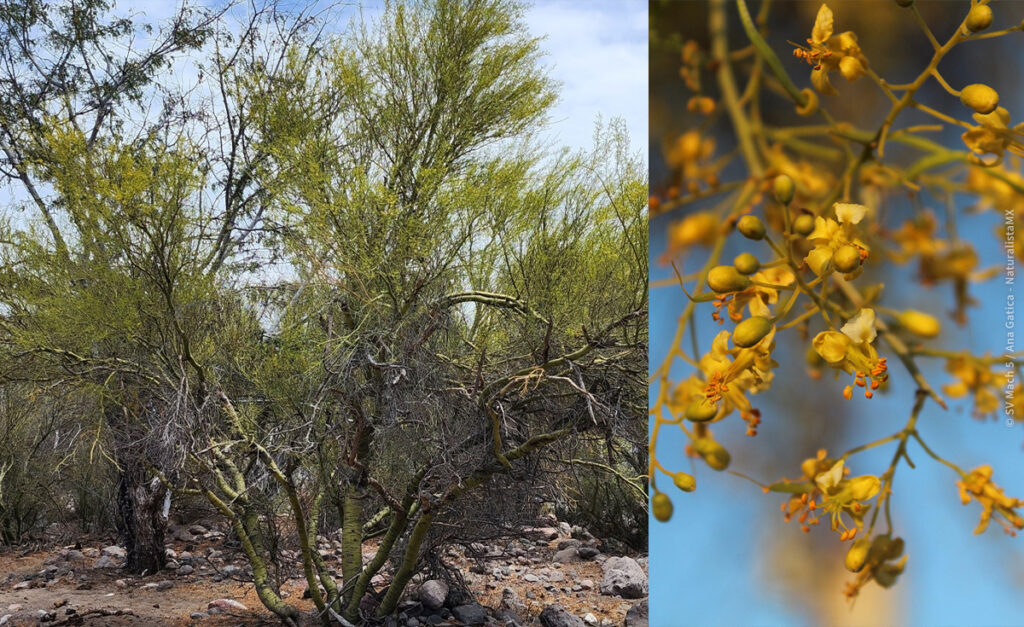
Its range includes Sinaloa, Sonora and Baja California in Mexico, and parts of southeastern California and Arizona in the United States. In Baja California, they are easily found along the Mexicali – San Felipe highway and in the foothills of the Sierra del Mayor. This tree bristling with vertical branches begins its flowering in late spring.
The Comca’ac people know it as ziipxöl, and it is part of their gastronomic identity. In addition to grinding its seeds into flour, they boil the green pods with meat and eat its seeds green.
Sonoran Palo Verde (Parkinsonia praecox)
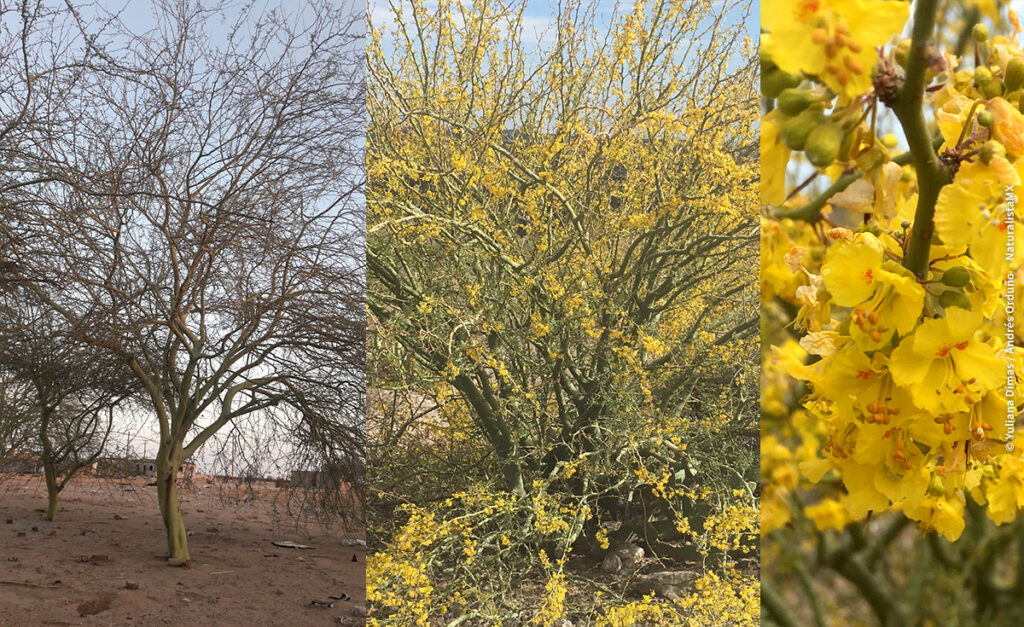
Its incredible ability to withstand dry seasons has allowed it to spread throughout the Americas, from the southern United States to Paraguay in South America. Its scientific name details a characteristic of the species: its early maturity, which comes in the first three to five years.
Among its properties, it exudes a sweet, water-soluble gum known in the region as “chucata”.
Honey Mesquite (Neltuma glandulosa)
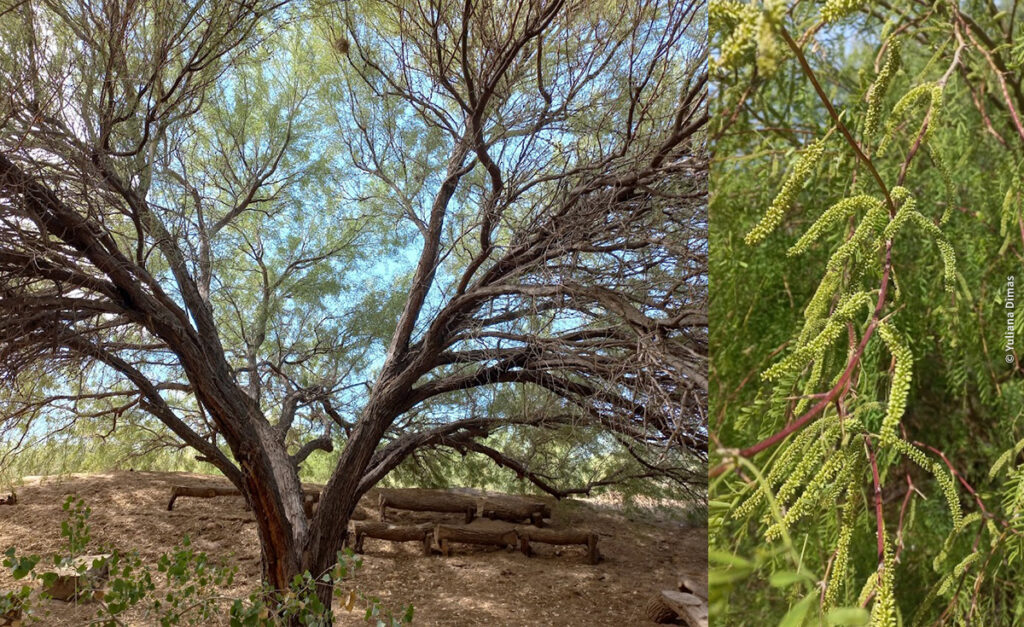
A tree native to the southwestern United States and northern Mexico, ranging in size from five to 14 meters in height. With a rounded crown and lightly foliaged branches, they provide welcome shade on hot days.
It flowers in spring and fall, with pale spikes with yellowish hints, elongated in shape. The ripe pods serve as food for mammals, birds and insects. The original Cucapah people prepared flour from the pods of this tree.
Screwbean Mesquite (Strombocrapa pubescens)
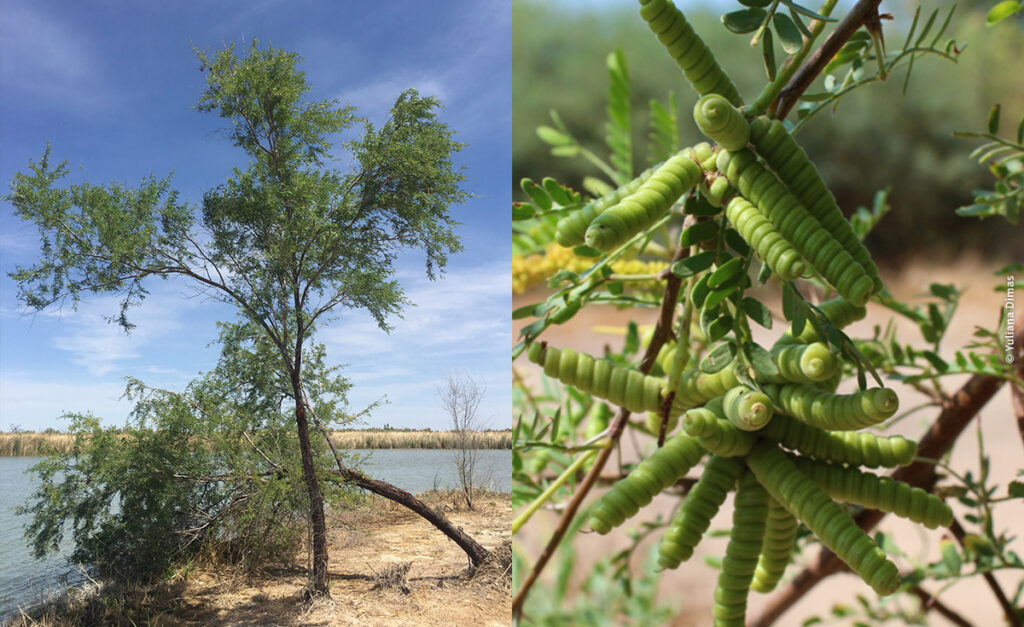
Small and prominent tree in arid regions of Baja California, Chihuahua, Coahuila and Sonora, in Mexico, and in California, Arizona, New Mexico and Texas, in the United States. Its flowering begins in April and lasts until July, giving yellow and white flowers.
Rodents, coyotes and hares feed on its pods, and it is also used by local ethnic groups such as the Cucapás, who are nourished by its protein content and excellent levels of calcium, magnesium, potassium, iron and zinc.
Pronatura Noroeste maintains a restoration effort with native plants in the Colorado River Delta, which you can join as an adopter of one hectare.
Click here and we will give you more information.












